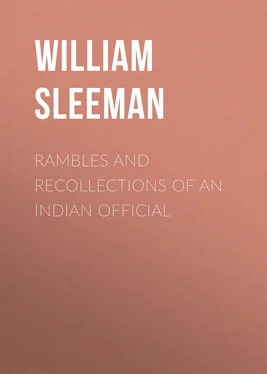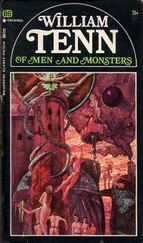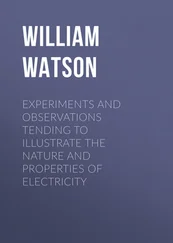The rude sketch given here in the author's text is not worth reproduction.
The 'pestle-and-mortar' pattern of mill above described is the indigenous model formerly in universal use in India, but, in most parts of the country, where stone is not available, the 'mortar' portion was made of wood. The stone mills are expensive. In the Bānda and Hamīrpur districts of Bundēlkhand sugar-cane is now grown only in the small areas where good loam soil is found. The method of cultivation differs in several respects from that practised in the Gangetic plains, but the editor never observed the slovenliness of which the author complains. He always found the cultivation in sugar-cane villages to be extremely careful and laborious. Ancient stone mills are sometimes found in black soil country, and it is difficult to understand how sugarcane can ever have been grown there. The author was mistaken in supposing that the indigenous pattern of mill is superior to a good roller mill. The indigenous mill has been completely superseded in most parts of the Panjāb, United Provinces, and Bihār, by the roller mill patented by Messrs. Mylne and Thompson of Bihīa in 1869, and largely improved by subsequent modifications. The original patent having expired, thousands of roller mills are annually made by native artisans, with little regard to the rights of the Bihīa firm. The iron rollers, cast in Delhi and other places, are completed on costly lathes in many country towns. The mills are generally hired out for the season, and kept in repair by the speculator. The Rājā of Nāhan or Sirmūr in the Panjāb, who has a foundry employing six hundred men, does a large business of this kind, and finds it profitable. Since the first patent was taken out, many improvements in the design have been effected, and the best mills squeeze the cane absolutely dry. Messrs. Mylne and Thompson have been successful in introducing other improved machinery for the manufacture of sugar in villages. The Rosa factory near Shahjahānpur in the United Provinces makes sugar on a large scale by European methods.
When the author says that the large canes are sold 'as a fruit' he means that the canes are used for eating, or rather sucking like a sugar-stick. The varieties of sugar-cane are numerous, and the names vary much in different districts. According to Balfour, the Otaheite (Tahiti) cane is 'probably Saccharum violaceum '. The ordinary Indian kinds belong to the species Saccharum officinarum . The Otaheite cane was introduced into the West Indies about 1794, and came to India from the Mauritius. It is more suitable for the roller mill than for the indigenous mill, the stems being hard ( Cyclopaedia of India , 3rd ed., 1885, s.v. 'Saccharum'). In a letter dated December 15, 1844, the author refers to his introduction of the Otaheite cane, and mentions that the Indian Agricultural Society awarded him a gold medal for this service. The cane was first planted in the Government Botanical Garden at Calcutta.
December, 1835.
Now the head-quarters of the British district of the same name, and also of the Indian Midland Railway. Since the opening of this railway and the restoration of the Gwālior fort to Sindhia in 1886, the importance of Jhānsī, both civil and military, has much increased. The native town was given up by Sindhia in exchange for the Gwālior stronghold.
This chief is called Rājā Rāo Rāmchand in the N.W.P. Gazetteer , 1st ed. He died on August 20, 1835. His administration had been weak, and his finances were left in great disorder. Under his successor the disorder of the administration became still greater.
Dowagers in Indian princely families are frequently involved in such intrigues and plots. The editor could specify instances in his personal experience. Compare Chapter 34, post .
An adopted son passes completely out of the family of his natural, into that of his adoptive, father, all his rights and duties as a son being at the same time transferred. In this case, the adoption had not really taken place, and the lad's duty to his living natural father remained unaffected.












